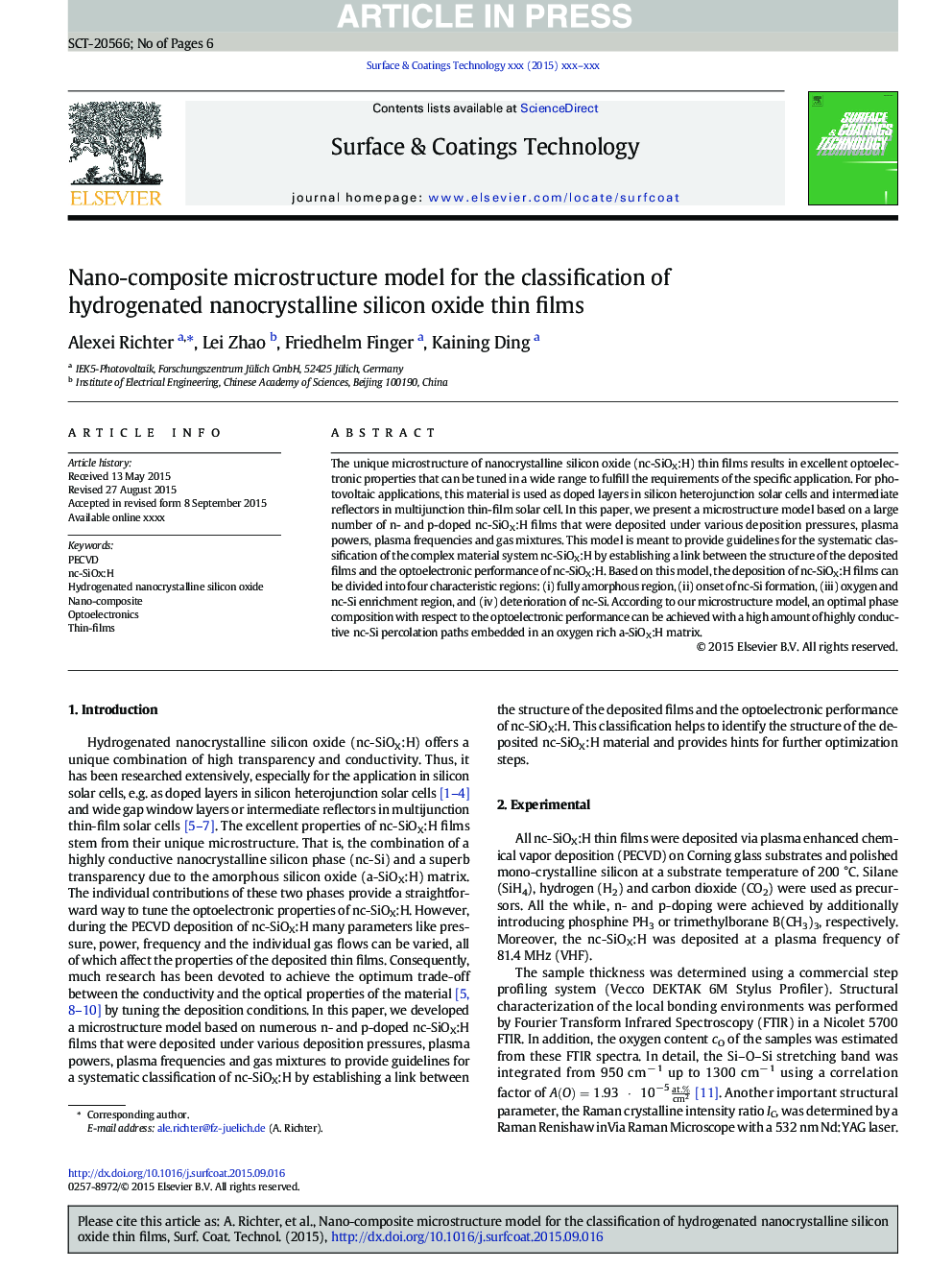| Article ID | Journal | Published Year | Pages | File Type |
|---|---|---|---|---|
| 8025436 | Surface and Coatings Technology | 2016 | 6 Pages |
Abstract
The unique microstructure of nanocrystalline silicon oxide (nc-SiOX:H) thin films results in excellent optoelectronic properties that can be tuned in a wide range to fulfill the requirements of the specific application. For photovoltaic applications, this material is used as doped layers in silicon heterojunction solar cells and intermediate reflectors in multijunction thin-film solar cell. In this paper, we present a microstructure model based on a large number of n- and p-doped nc-SiOX:H films that were deposited under various deposition pressures, plasma powers, plasma frequencies and gas mixtures. This model is meant to provide guidelines for the systematic classification of the complex material system nc-SiOX:H by establishing a link between the structure of the deposited films and the optoelectronic performance of nc-SiOX:H. Based on this model, the deposition of nc-SiOX:H films can be divided into four characteristic regions: (i) fully amorphous region, (ii) onset of nc-Si formation, (iii) oxygen and nc-Si enrichment region, and (iv) deterioration of nc-Si. According to our microstructure model, an optimal phase composition with respect to the optoelectronic performance can be achieved with a high amount of highly conductive nc-Si percolation paths embedded in an oxygen rich a-SiOX:H matrix.
Related Topics
Physical Sciences and Engineering
Materials Science
Nanotechnology
Authors
Alexei Richter, Lei Zhao, Friedhelm Finger, Kaining Ding,
